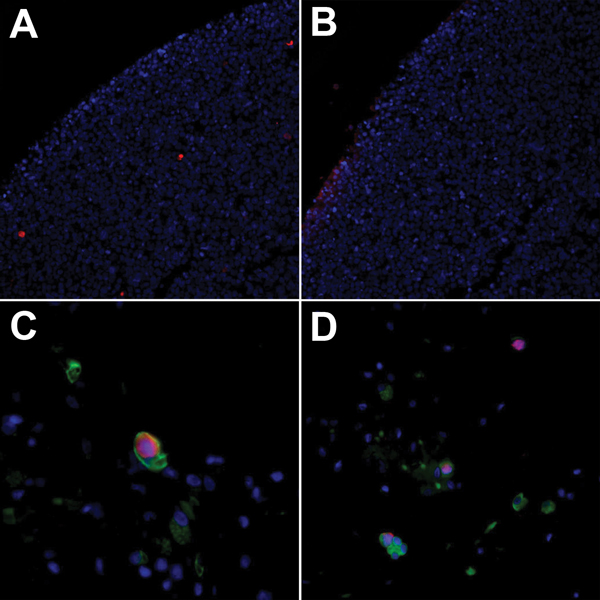Volume 21, Number 1—January 2015
Dispatch
WU Polyomavirus in Respiratory Epithelial Cells from Lung Transplant Patient with Job Syndrome
Figure 2

Figure 2. WU polyomavirus antigen in respiratory epithelial cells from lungs transplanted into a recipient (28-year-old woman) with Job syndrome. Immunofluorescence of 293T cells transfected with pDEST26-WU–virus protein 1 and stained with A) WU virus protein 1 polyclonal antibody (NN-Ab01) or B) preimmune serum. C) Double immunofluorescence with NN-Ab01 (red) and a monoclonal antibody against cytokeratin (green) showing a double-positive cell from the bronchoalveolar lavage specimen. D) Bronchoalveolar lavage specimen with multiple WU virus protein 1/cytokeratin double-positive cells. Original magnifications ×100 in panels A and B, ×600 in panel C, and ×400 in panel D.
Page created: December 19, 2014
Page updated: December 19, 2014
Page reviewed: December 19, 2014
The conclusions, findings, and opinions expressed by authors contributing to this journal do not necessarily reflect the official position of the U.S. Department of Health and Human Services, the Public Health Service, the Centers for Disease Control and Prevention, or the authors' affiliated institutions. Use of trade names is for identification only and does not imply endorsement by any of the groups named above.